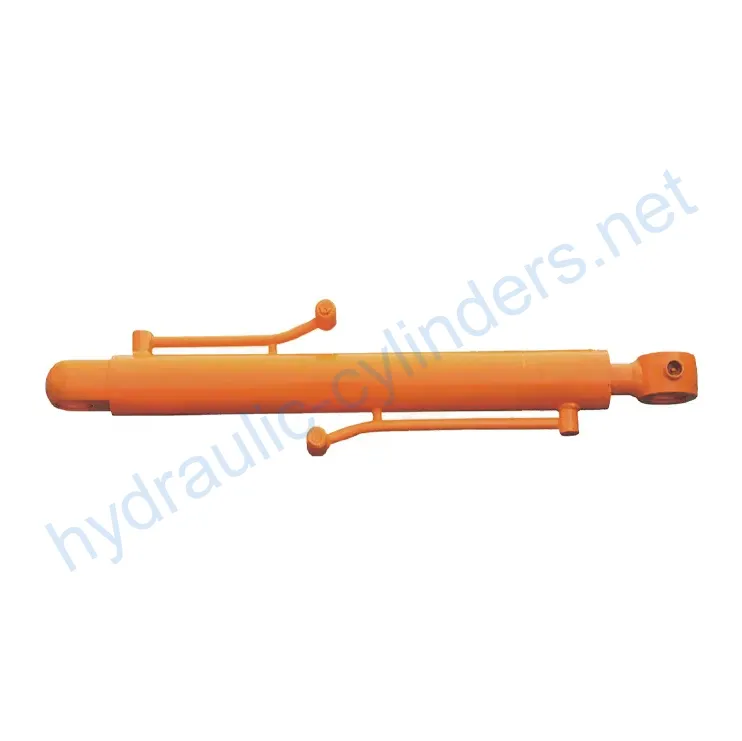Boom Cylinder For John Deere E260LC
As one of the hydraulic cylinders manufacturers, suppliers, and exporters of mechanical products, We offer hydraulic cylinders and many other products.
Please get in touch with us for details.
Mail:sales@hydraulic-cylinders.net
Manufacturer supplier exporter of hydraulic cylinders.
Boom Cylinder For John Deere E260LC
Introduction to Boom Cylinders
A boom cylinder is a critical component in hydraulic systems, specifically designed to control the movement of buckets in various heavy machinery, such as excavators, backhoe loaders, and front-end loaders. This hydraulic cylinder enables the bucket to lift, lower, and tilt, facilitating efficient material handling tasks. By utilizing pressurized hydraulic fluid, boom cylinders actuate the movement of the bucket, allowing operators to perform digging, loading, and transporting operations with precision and ease.
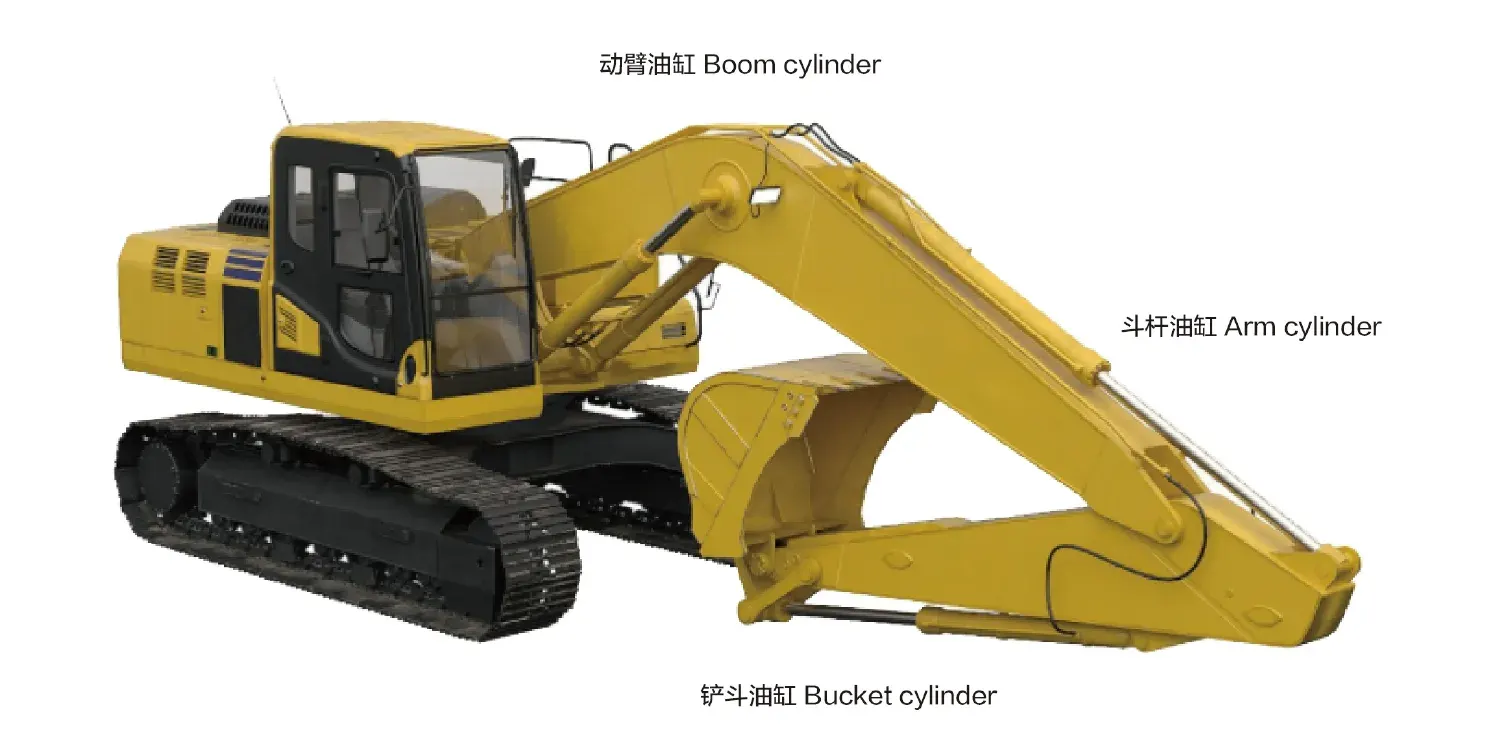
Key Features of the Boom Cylinder
- High Strength and Durability: Constructed from high-strength steel or aluminum, these cylinders are built to withstand high pressure and heavy loads, making them suitable for harsh working environments. Their design incorporates wear resistance and corrosion protection to extend their lifespan.
- Efficient Hydraulic Operation: The cylinder uses hydraulic fluid pressure for smooth extension and retraction, quickly responding to operator commands and providing powerful pushing and pulling force for handling heavy and complex tasks.
- Diverse Types: Boom cylinders can be customized as single-acting (using hydraulics in one direction) or double-acting (using hydraulics in both directions), catering to various operational needs. Some models are telescopic, allowing for greater extension without increasing external dimensions, which is ideal for space-constrained applications.
- Compatibility: Our products serve as perfect replacements for various hydraulic cylinders, ensuring seamless integration and performance.
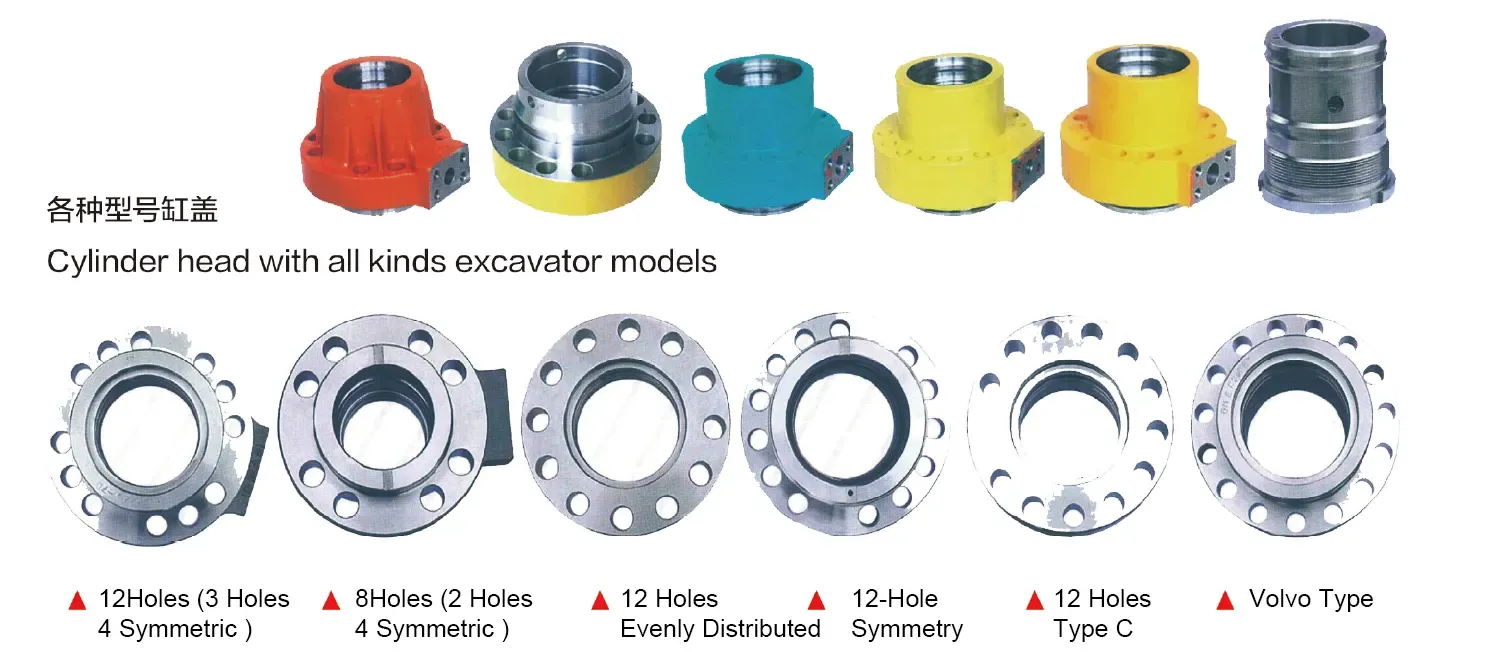
Applications of Boom Cylinders
Construction Equipment
In excavators, boom cylinders are essential for digging, loading, and moving soil or debris. Their ability to provide the necessary hydraulic power allows operators to efficiently complete excavation projects. In backhoe loaders, these cylinders assist not only in digging but also in lifting materials, showcasing their versatility in construction tasks.
Agricultural Machinery
In front-end loaders, boom cylinders are used for scooping, lifting, and transporting soil, hay, and other materials. Their robust design ensures that they can handle the demands of agricultural work, allowing farmers to improve productivity and efficiency in their operations.
Excavators
The boom cylinder plays a crucial role in enabling the bucket to penetrate the ground during excavation. By facilitating the digging motion, these cylinders enhance the overall performance of excavators in various soil conditions, making them invaluable for construction and landscaping projects.
Loaders
In front loaders, boom cylinders assist in lifting and dumping loads effectively. Their hydraulic prowess allows for the smooth operation of loading and unloading materials, which is vital for various industries, including construction and waste management.
Design Considerations and Selection Criteria
Load Capacity
When selecting a boom cylinder, one of the primary considerations is its load capacity. It is essential to choose a cylinder that can handle the maximum weight expected during operation without compromising safety or performance. The load capacity must align with the specifications of the machinery it will serve, ensuring that it can perform effectively under heavy loads.
Sealing Technology
Another critical aspect of design is sealing technology. High-quality seals prevent hydraulic fluid from leaking, maintaining pressure and efficiency within the system. The choice of materials for seals, such as polyurethane or nitrile rubber, is crucial in ensuring longevity and performance, as these materials provide excellent wear resistance and durability, reducing the frequency of seal replacements.
Durability
Durability is paramount in harsh working environments. Boom cylinders should be designed to withstand extreme conditions, including high pressures, severe temperatures, and exposure to corrosive elements. This may involve using specialized coatings and materials that enhance resistance to wear, corrosion, and environmental factors, thereby prolonging service life.
Safety Features
Safety is a vital consideration in the design of boom cylinders. Features such as pressure relief valves and robust construction can prevent catastrophic failures, ensuring that operators are protected during operations. Implementing safety measures not only safeguards personnel but also protects the machinery from damage.
Maintenance Accessibility
Lastly, ease of maintenance is an essential design criterion. A well-designed boom cylinder should allow for easy access to key components for inspection and service, minimizing downtime and facilitating regular maintenance routines. This accessibility can significantly enhance the operational efficiency of the machinery, ensuring it remains in optimal working condition.

Sealing and Lubrication
Effective sealing and lubrication are critical for the longevity and performance of boom cylinders. Various seals, such as piston seals and rod seals, are employed to prevent hydraulic fluid leaks. The selection of durable materials, like polyurethane and nitrile rubber, ensures that these seals can withstand wear and tear, maintaining the integrity of the hydraulic system. Additionally, the cylinder body and threaded end surfaces are finely machined to enhance wear resistance.
Regularly adding the appropriate hydraulic oil for lubrication is essential. Proper lubrication minimizes friction and wear between moving parts, ensuring smoother operation and reducing the risk of mechanical failure. It is important to establish a lubrication schedule to keep the hydraulic system functioning effectively.
Regular Inspection and Preventive Maintenance
- Routine Inspections: Regular visual inspections can help identify any signs of wear or damage early, allowing for timely repairs before major issues arise. Look for fluid leaks, cracks, or unusual noises during operation.
- Proper Lubrication: Ensure that the hydraulic system is adequately lubricated according to the manufacturer’s recommendations. This will help maintain optimal performance and extend the lifespan of the cylinder.
- Seal Replacement: Over time, seals may wear out and require replacement. Regularly check seals for signs of damage and replace them as necessary to prevent hydraulic fluid leaks and maintain efficiency.
Installation Guidelines
Installing a boom cylinder correctly is crucial for its performance and longevity. Begin by ensuring that the workspace is clean and organized, minimizing the risk of contamination during installation. Proper alignment of the cylinder is essential; misalignment can lead to premature wear and potential failure. Use appropriate mounting brackets to secure the cylinder firmly in place.
Before installation, inspect all components for damage. Ensure that hydraulic lines are free from blockages and that all fittings are clean. Once aligned, carefully connect the hydraulic lines, making sure to follow the manufacturer’s specifications for torque settings. After installation, conduct a thorough check for any leaks and verify that the cylinder operates smoothly before putting it to work.
Common Maintenance Tasks
- Regular Inspections: Conducting regular inspections helps identify potential issues early. Look for leaks, check for signs of wear on seals and hoses, and ensure that the cylinder operates smoothly without unusual noises.
- Proper Lubrication: Maintaining appropriate lubrication levels is critical for the cylinder’s functionality. Follow the manufacturer’s guidelines for the type and frequency of lubrication to prevent wear and tear.
- Seal Replacement: Regularly check seals for damage and replace them as needed to prevent leaks. Ensure proper installation of new seals to maintain hydraulic pressure and efficiency.
Proper installation, lubrication, and adjustment are crucial for maximizing the lifespan of boom cylinders. During installation, ensure that the cylinder is correctly aligned to prevent undue stress on the components. Using the right mounting supports can significantly reduce the risk of misalignment.
Safety Considerations and Environmental Factors
When using boom cylinders, safety measures are paramount. Operators should be aware of the potential hazards associated with hydraulic systems. Ensuring that all safety gear is worn and that protocols are followed can prevent accidents. Regular training on the safe operation of machinery equipped with boom cylinders is also recommended to enhance awareness and reduce risks.
Fault Diagnosis and Common Issues
- Hydraulic Fluid Leaks: One of the most common issues is fluid leakage, which can result from worn seals or damaged hoses. Regular checks can help identify and address leaks promptly.
- Loss of Power: If the boom cylinder is slow to respond or lacks power, it may indicate low hydraulic fluid levels or pump issues. Diagnosing the source of the problem is essential for effective resolution.
- Unusual Noises: Grinding or knocking sounds during operation may indicate mechanical wear or misalignment. Investigating the source of the noise and addressing it promptly is critical to avoid further damage.
To effectively diagnose and resolve issues, it is advisable to consult the manufacturer’s troubleshooting guide. Preventive measures, such as regular maintenance and inspections, can significantly minimize the risk of encountering these common problems.
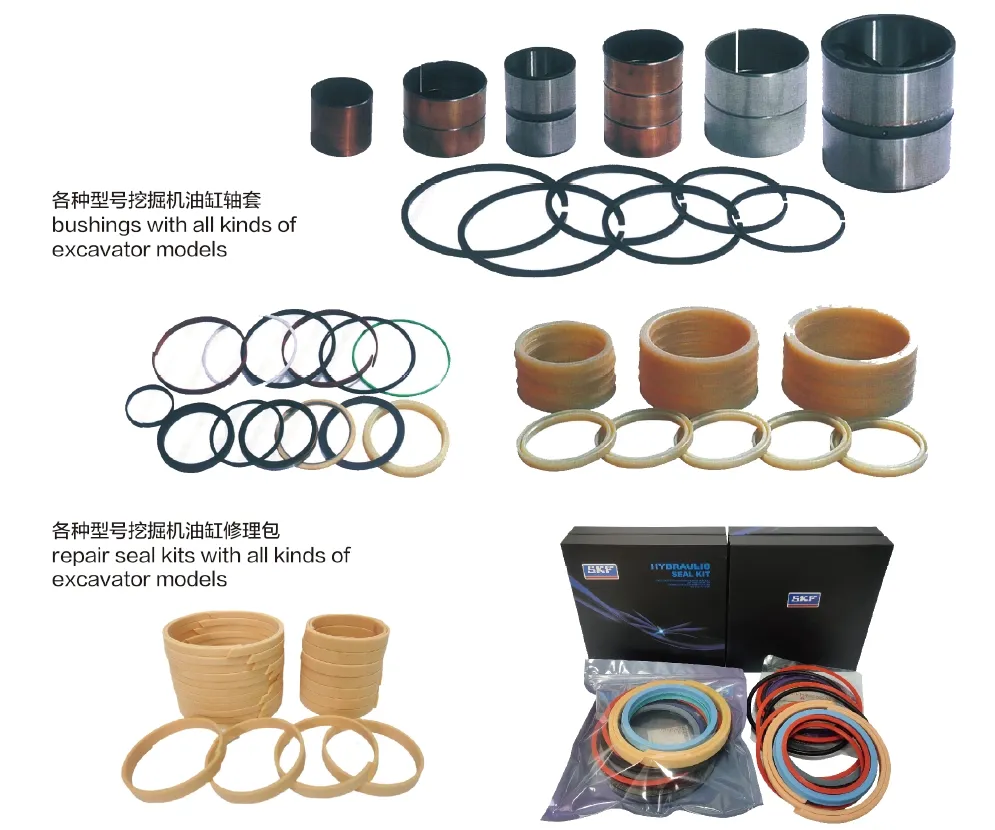
About Our Company
We are a leading manufacturer of replacement hydraulic cylinders, providing a comprehensive range of products to meet the needs of both domestic and international markets. Our commitment to excellence drives us to adhere to strict quality standards, utilizing a refined manufacturing process and advanced production management strategies.
Our company prides itself on employing skilled technical personnel, utilizing high-end digital manufacturing equipment, and implementing specialized testing systems to continuously enhance our manufacturing capabilities. This dedication to quality ensures that we meet diverse customer requirements with high efficiency, precision, and quality.
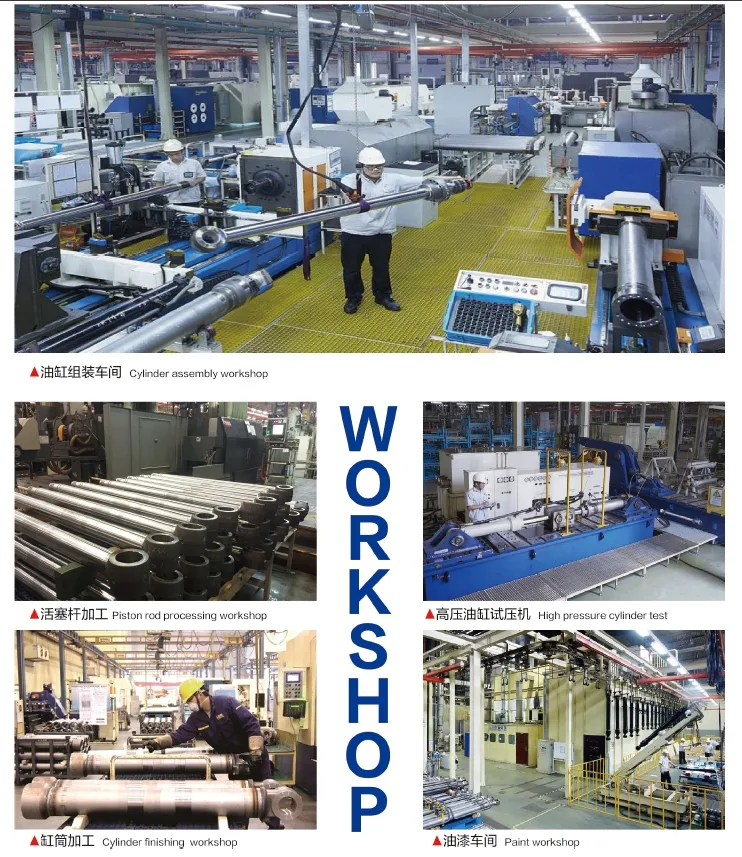
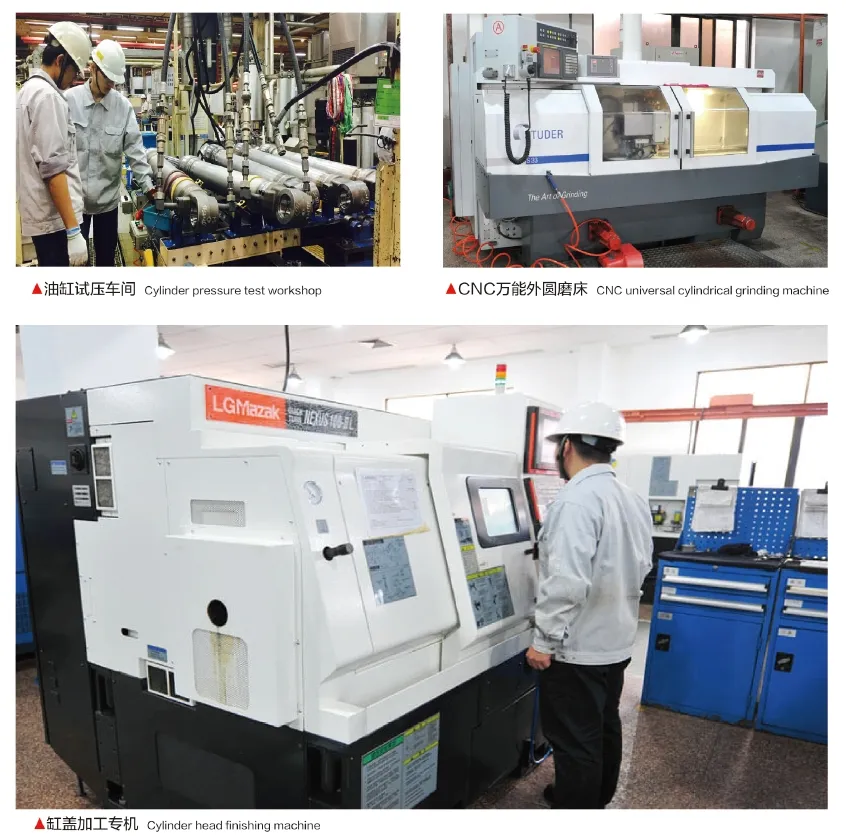
Through our focus on professionalism, international certifications, customized services, advanced manufacturing equipment, and exceptional after-sales support, we strive to deliver the highest level of service and quality to our valued customers.
Author: lyl
Take a Tour of Our VR Factory:
Take a tour of our VR factory with the following
Hydraulic Cylinder Application:


